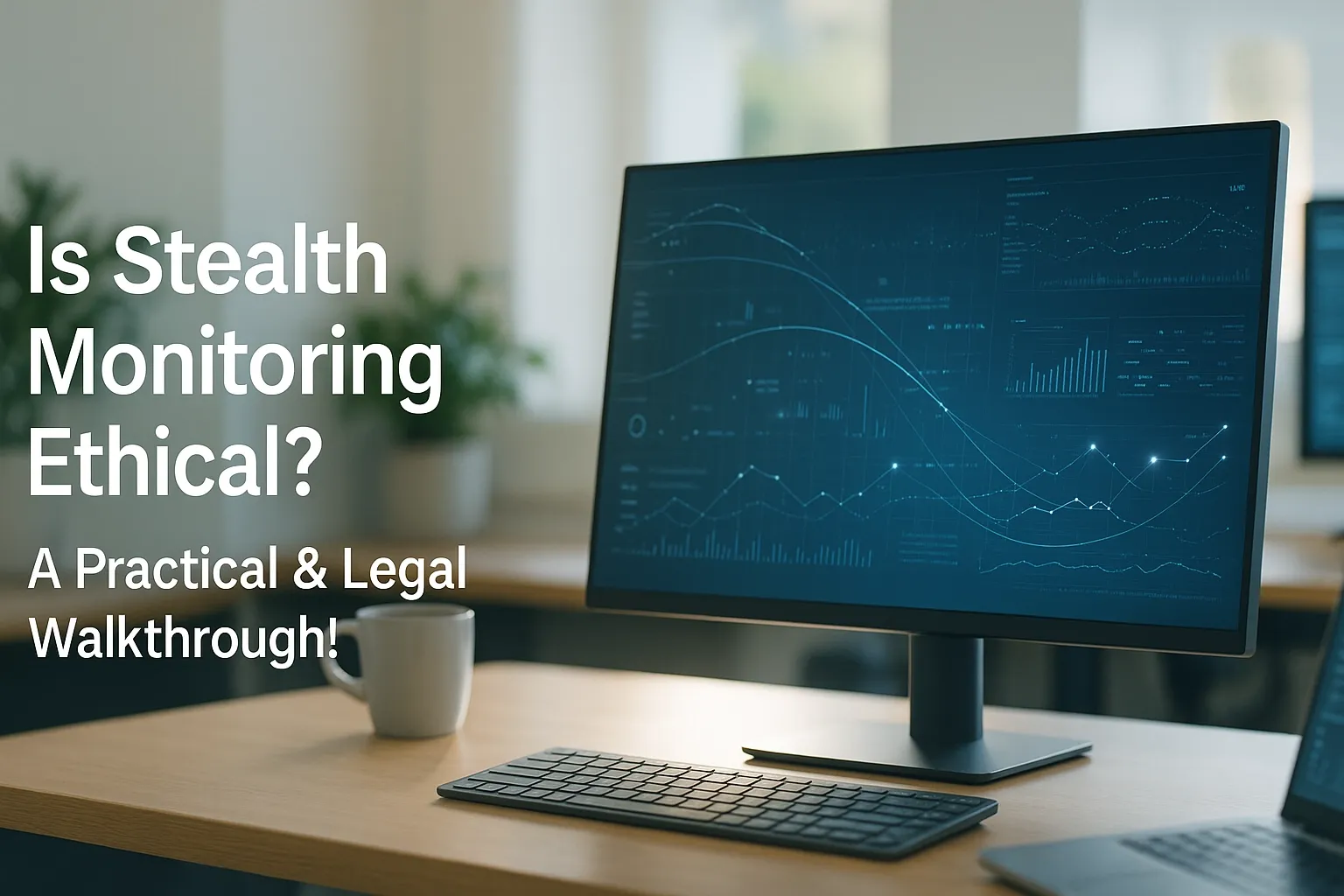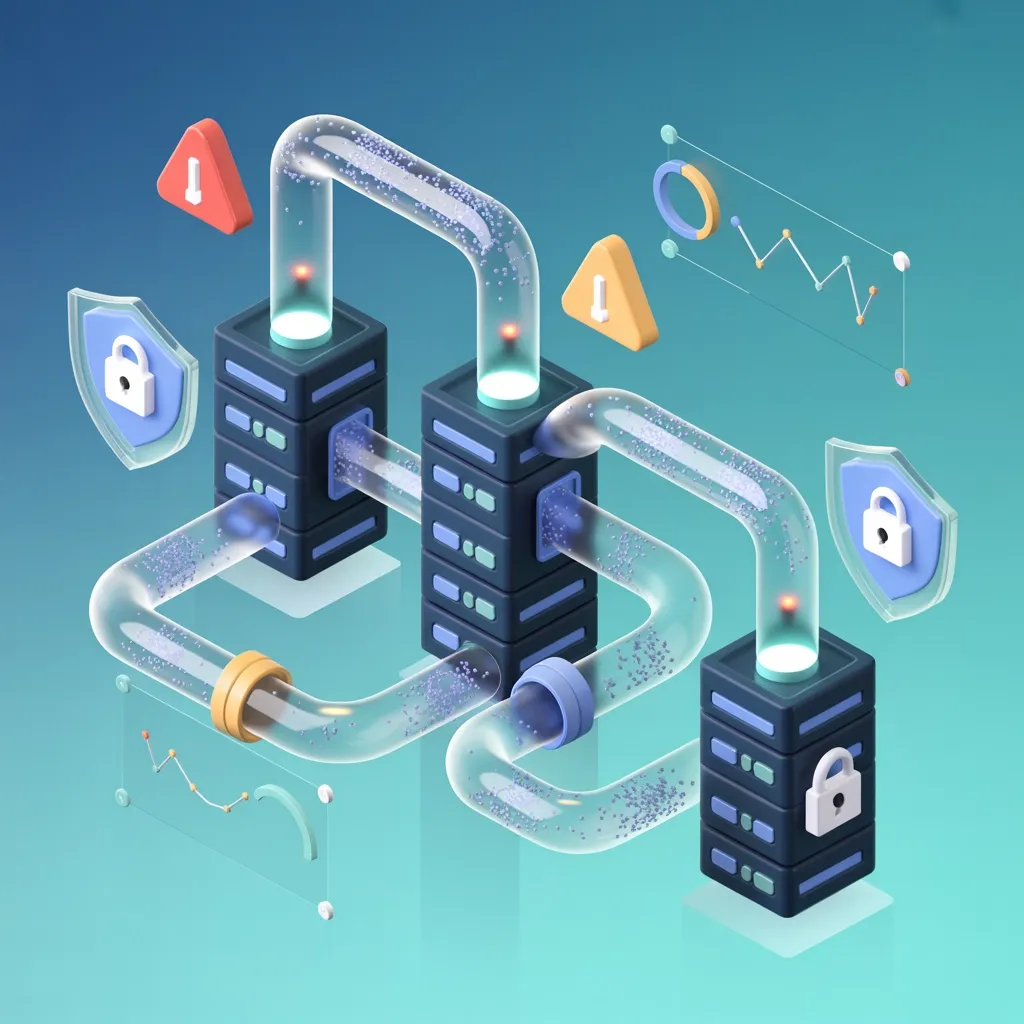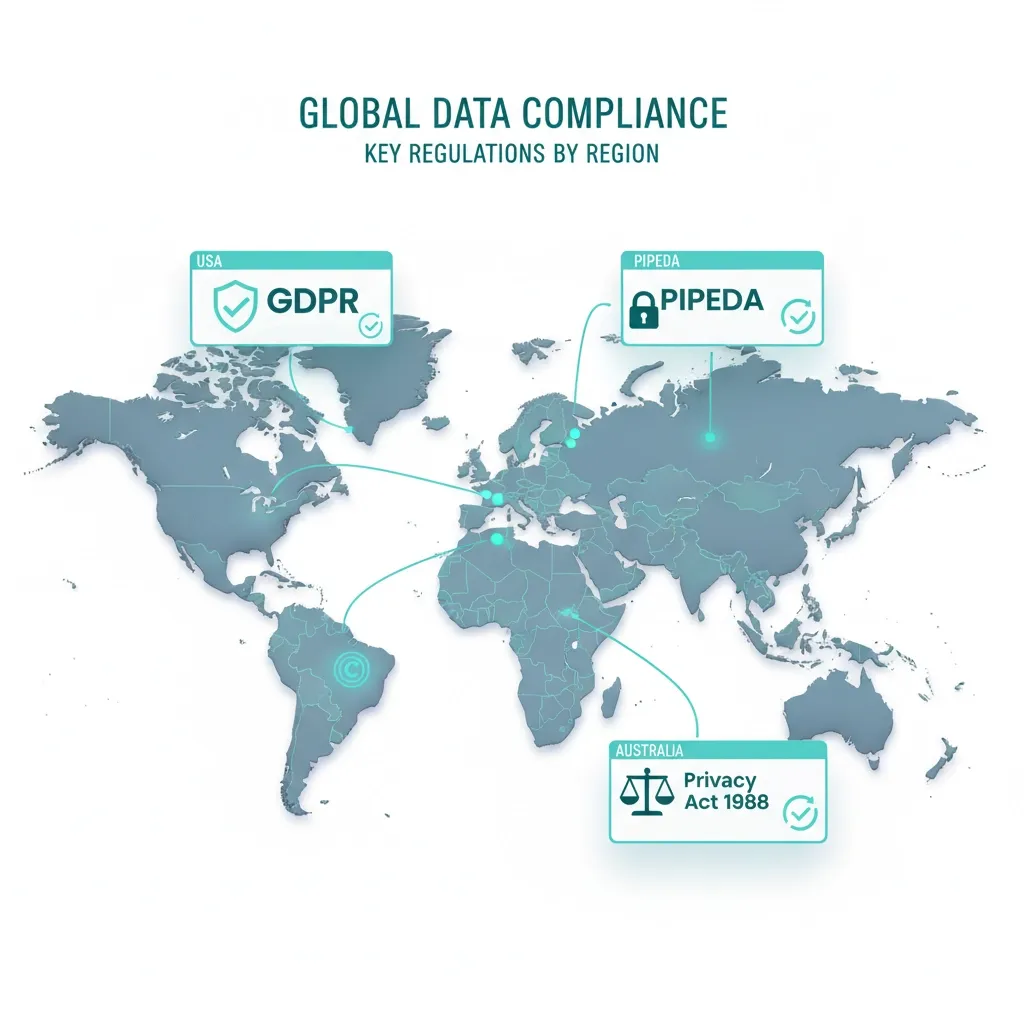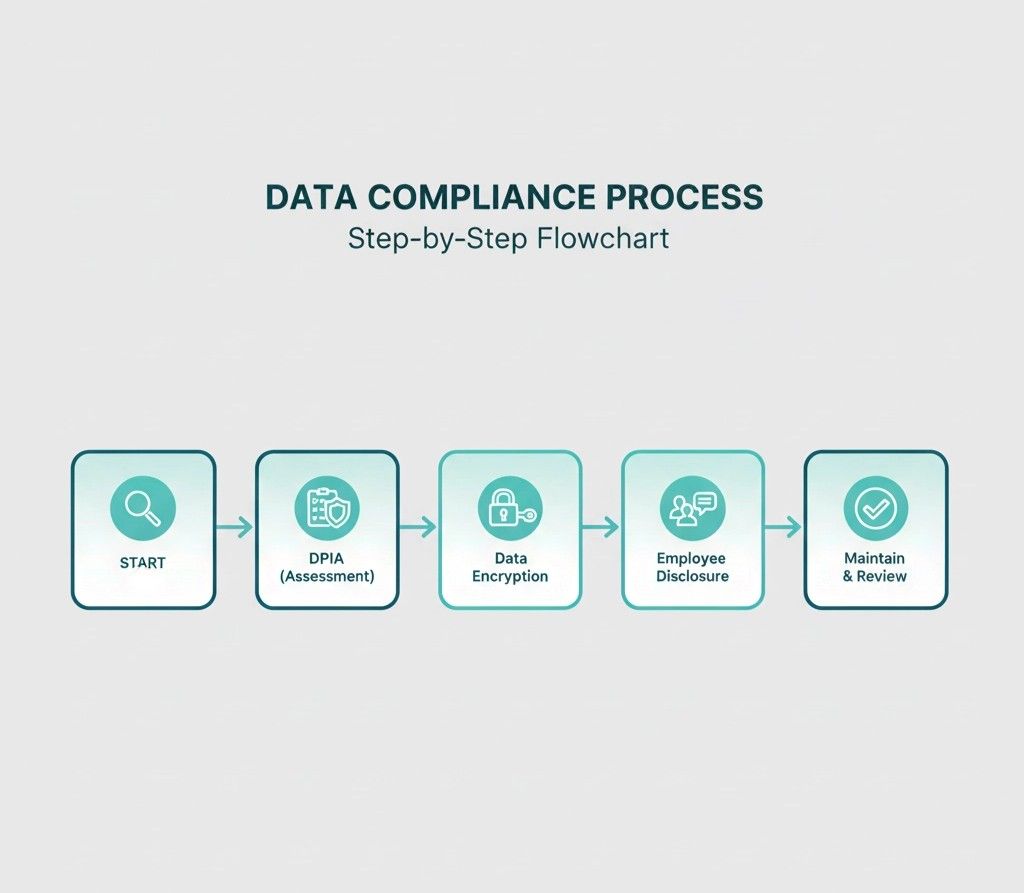Is Stealth Monitoring Ethical? A Practical & Legal Walkthrough!

Summary:
-
Stealth monitoring isn’t unethical by default - it’s the misuse or lack of transparency that creates ethical and legal risks.
-
A compliant monitoring policy and Data Privacy Impact Assessment are crucial to balancing productivity insights and privacy.
-
Businesses should prioritize ethical monitoring software that supports transparency, data protection, and employee trust.
-
Apploye enables secure, compliant, and trust-driven employee monitoring, helping companies boost performance without crossing privacy lines
Stealth monitoring, till this date, remains a topic that few want to discuss openly. I remember when I faced back-to-back data leaks in a quarter, and I was so desperate to find out who was behind it!
That’s when I stumbled upon the question: Is stealth monitoring ethical?
In a world of hybrid work, insider threats and compliance risks have become constant headaches. So, it’s obvious that anyone like me would want to be safe!
That’s why, in this blog, I’ve shared everything you need to know about stealth monitoring and its ethics from my experience.
In this article
Definition of stealth monitoring
Reasons you need stealth monitoring
Stealth monitoring legal obligations
Get started with legally compliant stealth monitoring
What Exactly Is Stealth Monitoring?
You can think of stealth monitoring as employee monitoring without any disclosure. Basically, all of the internet usage and online activities of the employees will be tracked, but they will have no idea.
The software will run in the background and capture or record the screen without any pop-up/notification.
It can also capture or gather:
- Screenshots of user activity
- Keystrokes or app usage
- Websites visited, and idle time
- File movements or data transfers
While the idea of this type of monitoring might sound fishy, the purpose is not necessarily so.
For some companies, it becomes a part of the system for security and data protection rather than control. The issue becomes severe when stealth monitoring is maintained without legal justification or ethical standpoints.
Track ethically with transparent monitoring
Why Should You Choose Stealth Monitoring?
Just like me, any founder or employer can face a list of issues that will be reasons for using stealth monitoring. Here are some of the common ones:
To Prevent Data Leaks & Whistleblowers
The first and foremost reason is obviously data leak prevention, and it is the reason that made me curious about this. Stealth monitoring can easily identify any culprits or whistleblowers without them knowing anything!

For example, a monitoring program can alert the IT team when confidential files are copied outside the company's servers. With that, employers can easily know who’s stealing data and take disciplinary action.
Secure your data with smart monitoring
Identifying Productivity Patterns in Remote and Hybrid Teams
Remote work is more efficient and productive, yet it is also most dangerous. Because you can’t really see what your employee is doing remotely, it can be tough for you to help your team.
Tools like employee monitoring software or time tracking platforms allow you to analyze user activity reports without being physically present.
Moreover, it can do the analysis for you so that your remote employees become more collaborative and productive.
Boost remote team productivity today
Ensuring Compliance in Regulated Industries
For finance, healthcare, or legal sectors, workplace surveillance is seriously mandated & regulated.
Laws and regulations such as the Electronic Communications Privacy Act (ECPA) demand proper management of company equipment and sensitive information.
Having stealth monitoring software can help you track your data and assets properly without raising any alarms.
Stay compliant with smart tracking
Monitoring Third-Party & Outsourced Workforces
Outsourced teams and freelancers often access sensitive work devices and systems remotely.
Stealth monitoring software can validate whether these external workers are following security procedures, using authorized software tools, and avoiding non-work-related websites.
Still, it’s vital to mention monitoring in the labor contract or company policies to avoid legal liabilities and uphold transparency.
Time Theft & Cyberloafing Prevention
Do you know that studies show that due to cyber loafing, employee productivity drops at least 30-40%? That’s $750 million revenue loss in just one year for US businesses.
Employee monitoring software in Stealth mode can detect unusual computer activity and excessive time spent on non-work-related websites.
However, we all know that not all departments need to be on the company CRM. For the marketing team, being on social media is their job description!
That’s why any monitoring approach should be contextual - focusing on outcomes, not surveillance.
Stop time theft without spying
What are the Legal and Ethical Implications of Stealth Monitoring?
From legal consequences to increased employee turnover, there can be severe ethical implications of stealth monitoring.

Firstly, get a quick look at this table to understand what’s the overall position of different regions regarding this:
Now, what are the exact implications to face?
Privacy Concerns & Productivity Loss
All employees expect the company to protect any personal or financial data. However, with this type of monitoring, the privacy expectations can fall through. They can see it as a security threat to their private information, and it can deeply affect your and the team’s overall productivity.
As a result, the company will lose revenue in the long run.
Build trust with ethical monitoring
Misuse of Data
While most companies do not partake in data leaks or information sales, it’s hard for employees to justify that. What if your information is used without your knowledge, and the company feigns ignorance?
From the employee’s perspective, being anxious about the data usage policy can be challenging.
Illegality of Scope
Without revealing the actual scope of the monitoring and data usage policy, most regions don’t allow employee monitoring. So, it becomes illegal for the employer to implement that.
So, for employees, it’s not only a security breach but also a matter of getting involved in illegal activities.
Employee Classification & Discrimination
When your team manager suddenly starts tracking a few members of the team, you know that something is going on. Now, segmenting the team into multiple parts turns into a discrimination scenario, and it’s hard to ignore.
Classifying each team and discriminating against a few employees can be demotivating and suffocating. So, be careful about that and take the necessary measures to keep yourself from harm!
Monitor fairly across all teams
How to Implement Stealth Monitoring with Proper Compliance?
If you really have to implement stealth monitoring, then there are certain compliance requirements to follow. Let me guide you on how to do that.

Step 1: Define Purpose and Scope
Identify the reason (e.g., data theft investigation, security breaches, or confidential information leak). Without a definitive reason, it’s hard to justify tracking employee computer activity. So, limit the scope to relevant teams and set a defined timeframe.
Step 2: Validate Why Stealth Monitoring is Needed
Use stealth only when no other monitoring programs (like transparent employee time tracking) can achieve the goal. Otherwise, once employees find out about the system monitoring, they will be livid!
Best Employee Time Tracking Software
Step 3: Conduct a Data Privacy Impact Assessment
Perform a DPIA before deployment. Documenting lawful basis, ethical risks & mitigation policies, and retention duration will save you hassle in the future.
Step 4: Choose Monitoring Software Features Responsibly
Opt for privacy-enhancing features such as:
- Blurred screenshots
- Limited access control
- Auto data deletion
- Role-based permissions
These will be effective compared to just storing screenshots and keystroke data.
Get privacy-first monitoring features
Step 5: Secure Data Storage and Maintain Data Retention Policy
Always maintain a separate server for sensitive data storage, as well as keep it tight with multi-level encryption. On top of that, keep the data only for a limited time period, let’s say: 60 days.
After that, the files will be automatically deleted so that no private information gets leaked.
Step 6: Prepare and Inform Employees about the Monitoring Policy
Even if you use Stealth mode, employees should know a monitoring policy exists in general. It should define what’s monitored, why, and how data is protected.
Step 7: Review Regularly and Keep it Updated
Reassess monitoring annually. Laws evolve, and so should your monitoring policy. Publish aggregated, anonymized user activity reports to promote transparency.
Start with compliant monitoring
How Apploye Stealth Monitoring Tracks Employees Ethically
Here’s how Apploye keeps covert monitoring ethical:
Only for Work Reasons
Stealth monitoring should only happen on company-owned devices. The goal is to protect company property, make sure work is getting done, and meet security or legal requirements.
Let Employees Know
Tell workers in their contract or employee handbook that monitoring might happen on company devices and explain why. Even if the monitoring app runs in the background, people should know it's there.
Keep It Work-Related
Only track things that are actually about work and job performance. Stay away from personal information, private messages, and what people do outside of work hours.
Limit Who Can See It
Only specific managers who need the information for their job should be able to access monitoring data. Don't give everyone access.
Respect Personal Boundaries
Never install stealth monitoring software on employees' personal devices. Personal email accounts, text messages, and non-work apps are off-limits.
Don't Keep Data Forever
Only store monitoring data as long as you actually need it. Let employees ask to see what information you have about them, and write down how you handle everything.
Keep It Secure
Protect all monitoring data with encryption and keep track of who accesses it to prevent misuse.
Conclusion
By now, you can already tell that stealth monitoring is not exactly unethical. However, the complications with this can be severe.
So, what I did, and you can do as well, is to use completely transparent monitoring software for better trust and reliability. Tools like Apploye prove that productivity and privacy can coexist.
Build trust with transparency
FAQs
Is stealth monitoring legal in the workplace?
It depends on your country’s privacy laws. In most regions, including the EU and UK, hidden employee monitoring is only legal with a clear, documented justification such as a security investigation, and after conducting a DPIA.
Is stealth monitoring ethical?
Stealth monitoring can be ethical only when it’s proportionate, time-limited, and used for a legitimate reason like preventing data theft. Otherwise, it risks damaging trust and morale.
Can employers monitor employees without their knowledge?
Only in exceptional cases. Most privacy regulators, such as the ICO and EDPB, require that employees be informed unless transparency would defeat the investigation’s purpose.
Do employers need employee consent for monitoring?
Under GDPR and similar frameworks, consent is usually not valid because of the power imbalance between employer and employee. Instead, organizations must rely on lawful bases like legitimate interest or legal obligation.
What happens if stealth monitoring breaks privacy laws?
Companies can face regulatory fines, lawsuits, and severe reputation loss. The ICO and other regulators have already fined firms for unlawful or disproportionate employee surveillance.
How long should monitoring data be stored?
Retain it only as long as necessary for the investigation or compliance requirement. Short retention periods and auto-deletion policies are best practices.

